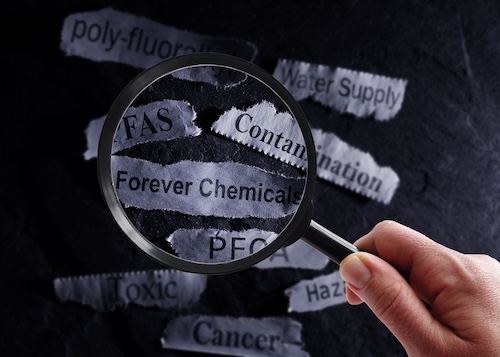AFFF Contamination Lawsuits: Fire Departments and Legal Responsibility
AFFF contamination lawsuits have drawn national attention as more communities discover PFAS chemicals in their drinking water. At the center of these lawsuits is aqueous film forming foam, a firefighting tool used for decades to control flammable liquid fires. While chemical manufacturers are the primary defendants, questions have surfaced about whether fire departments could also be held liable for PFAS contamination.
In this blog, we explain how AFFF firefighting foam contaminates groundwater, review the legal background of AFFF contamination lawsuits, and examine whether fire departments can be held liable, with guidance on working with an experienced AFFF lawsuit attorney to pursue a personal injury or environmental claim.
The Mechanics of AFFF: How Firefighting Foam Contaminates Groundwater
AFFF, or aqueous film forming foam, is effective in fighting flammable liquid fires, but it contains PFAS chemicals that pose serious environmental and health risks. This section explains how AFFF enters the environment and contaminates groundwater supplies.
How AFFF Works
AFFF is a synthetic foam used to extinguish liquid fuel fires. It creates a film that cuts off oxygen and prevents vapor release. This suppresses flames quickly and is especially useful on jet fuel and other volatile substances. AFFF has been used for decades at military bases, airports, and industrial sites.
PFAS: The Core Contaminant
The active ingredients in AFFF are polyfluoroalkyl substances, or PFAS. These are toxic, man-made chemicals resistant to heat, oil, and water. Because of their stability, they do not break down easily in the environment. This quality makes PFAS effective in firefighting foam but dangerous to human health and the environment.
Entry into Soil and Water
When AFFF is used, sprayed, or washed off, it can seep into the ground. From there, PFAS chemicals move into the soil and reach groundwater. Repeated training exercises and firefighting responses increase this risk. Rain can also carry PFAS into nearby water sources. Once PFAS reach drinking water systems, they are difficult to remove.
Contamination Sites
Common contamination sites include firefighting training facilities, military installations, airports, and chemical plants. Wastewater treatment plants may also spread PFAS into surface water and sludge. These sites often show high concentrations of PFAS in local groundwater and drinking water supplies.
Lasting Impact
Because PFAS are known as “forever chemicals,” they stay in groundwater for years. This long-term presence increases the chance of human exposure through drinking water. Exposure to PFAS has been linked to serious health conditions such as kidney cancer, testicular cancer, thyroid disease, and other adverse health effects.
Importance in Litigation
Understanding how AFFF contaminates groundwater is critical in AFFF contamination lawsuits. Plaintiffs allege that chemical manufacturers failed to warn about the risks of PFAS exposure. As AFFF firefighting foam lawsuits continue in multidistrict litigation, groundwater contamination remains a central issue in both personal injury and environmental claims.
Legal Background: AFFF Litigation and PFAS Contamination
AFFF litigation centers on claims that toxic PFAS chemicals in firefighting foam caused serious health risks and contaminated groundwater across the country.
What Plaintiffs Allege
In AFFF contamination lawsuits, plaintiffs generally allege that manufacturers of aqueous film forming foam knew or should have known about the dangers of PFAS exposure. These lawsuits claim that the use of AFFF led to personal injury, property damage, and polluted drinking water. Plaintiffs allege exposure to PFAS caused personal injuries such as kidney cancer, testicular cancer, thyroid disease, and other adverse health effects.
Key Health Concerns
PFAS exposure is linked to various cancers and medical conditions. Studies from the Centers for Disease Control and Prevention and the Environmental Protection Agency connect PFAS toxicity to kidney and testicular cancers, thyroid problems, and prostate cancer. These harmful chemicals can remain in the human body and environment for years. Firefighters, military personnel, and residents near contaminated sites are at higher risk for PFAS-related illnesses.
The AFFF MDL in South Carolina
The most significant AFFF firefighting foam litigation is the multidistrict litigation (MDL No. 2873) consolidated in the U.S. District Court for the District of South Carolina. This MDL groups thousands of AFFF firefighting foam cases into a single court for efficiency. It includes personal injury claims, drinking water contamination cases, and wrongful death lawsuits. A judicial panel approved this MDL to streamline proceedings against multiple chemical manufacturers.
Defendants in AFFF Lawsuits
The main defendants in AFFF cancer lawsuits are companies that produced or sold PFAS-containing firefighting foam. These include 3M, DuPont, Chemours, Tyco Fire Products, and other chemical manufacturers. Lawsuits claim these companies failed to provide warnings about PFAS contamination and its long-term health risks.
EPA Actions and Regulations
The Environmental Protection Agency has issued health advisories and action plans related to PFAS in drinking water. Recent advisories recommend near-zero levels of PFOA and PFOS, two key PFAS compounds found in AFFF. These advisories affect how public water systems and municipalities handle PFAS contamination and influence legal claims in firefighting foam lawsuits.
AFFF Litigation Moving Forward
As AFFF contamination lawsuits grow, the focus remains on the impact of PFAS chemicals on human health and the environment. The outcome of the MDL and related cases will shape future claims involving PFAS-containing firefighting foam. Victims continue to seek compensation through mass tort attorneys for medical costs, property damage, and long-term health monitoring
Can Fire Departments Be Held Liable for AFFF Groundwater Contamination?
As AFFF contamination lawsuits expand, questions have emerged about whether fire departments can also be held legally responsible for groundwater contamination linked to PFAS-containing firefighting foam.
The Role of Fire Departments as End Users
Fire departments are not manufacturers of aqueous film forming foam. They are end users. Most used AFFF in response to flammable liquid fires or during mandatory training exercises. In many cases, departments followed standard operating procedures and government guidance. However, legal responsibility can still depend on how and when the foam was used or disposed of.
When Liability May Apply
Fire departments may face legal exposure if they continued to use AFFF after warnings were issued about the risks of PFAS chemicals. Claims may also arise from improper storage, disposal, or training practices that led to PFAS contamination of soil and drinking water. If a department failed to take steps to reduce exposure or contain runoff, it could be named in AFFF firefighting foam lawsuits.
Sovereign Immunity and Legal Protections
Municipal fire departments may be protected by sovereign immunity in some states. This legal doctrine limits lawsuits against government agencies. However, immunity is not absolute. If a department acted with gross negligence or violated environmental regulations, immunity might not apply. Courts will examine the facts of each case and the actions taken by local agencies.
Military and Federal Fire Units
Military bases have been some of the largest users of AFFF. The Department of Defense mandated its use for decades. Firefighting units on these bases may be shielded by federal immunity, but the government has faced pressure to address PFAS pollution. Some lawsuits focus on military contractors rather than government-employed personnel.
Liability Still Centers on Manufacturers
The primary targets of AFFF cancer lawsuits remain the chemical manufacturers. Plaintiffs generally allege that companies like 3M and DuPont concealed the health risks of PFAS chemicals. These companies designed, produced, and distributed the firefighting foam that caused personal injury and environmental harm. Most claims continue to focus on their responsibility for the toxic chemicals found in AFFF.
What Fire Departments Should Do Now
Departments should review past use of AFFF, document disposal practices, and transition to fluorine-free firefighting foam if possible. Monitoring local drinking water systems for PFAS is also critical. While most lawsuits target manufacturers, any agency that used PFAS-containing firefighting foam may need legal guidance and risk assessment.
Speak With an AFFF Lawsuit Attorney at Rueb Stoller Daniel
If you or someone you know has been exposed to AFFF firefighting foam or contaminated drinking water, you may be entitled to compensation. Our team at Rueb Stoller Daniel is actively reviewing claims related to PFAS exposure, personal injury, and groundwater contamination.
Contact us at 1-866-CALL-RSD for a free case review today!








